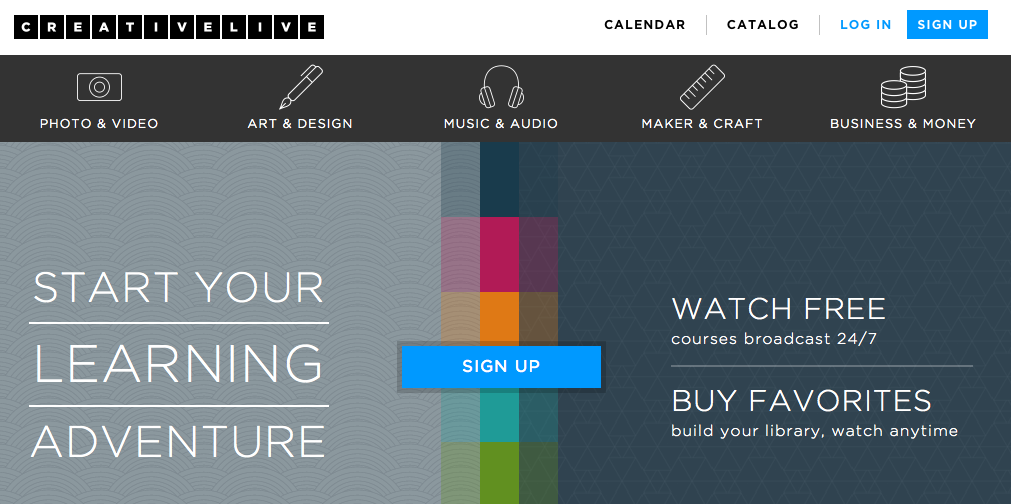As I outlined previously in The Fire Hose, there is a flood of User Generated Content (UGC) being redirected for editorial and marketing purposes. The flood waters are rising constantly, as new services come on line to collect the content, mine it and monetize it.
Even though this will be transformational in the photo and communication realms, it does not mean the end of Professionally Generated Content (PGC). In fact, most editorial, marketing and advertising efforts will need a combination of both. Let me outline how I see the relationship between UGC and PGC.
I’ll also take a quick look at another variation, Professionally Curated Content. I’ll address this more fully in another post.
How I’m using these terms
I’m using the term UGC to mean an content that is created and shared for free. The vast majority of UGC is created by non-professionals, and uploaded to Facebook, Instagram, Pinterest, etc. Note that some UGC is made by professionals, but if it’s been created and given away for free, I’m calling it UGC.
PGC, by contrast, is content that Creative Professionals are hired to create. Most often this work is first published in print or on a website, and some component may also be shared to a social media site. We’re also starting to see PGC that is created specifically for social media websites.
The Role of UGC
UGC is being used to drive engagement. It helps to create a community, as people feel involvement. “Hey, my comment is up on the Washington Post site” or “my photo was featured in the Instagram GoPro feed.” This allows people to feel a direct relationship with some product. Outbound messaging, no matter how well-crafted, simply cannot do this.
Sometimes UGC is used as outbound messaging, working to keep the featured product at the top of your mind. We’re constantly inundated by a stream of visuals, and UGC can supply the amount of content required by the wired (and wireless) world. There’s no way that most entities can produce content fast enough to feed the beast. Even all-you-can-eat stock photos can’t provide enough throughput, in many cases.
But there are limits to what can be done with UGC (big data and crowd sourcing.) It can provide you plenty of facts, and some of them will even be correct, but it generally does not provide context.
The role of PGC
UGC can attract attention, but PGC can tell us how to understand, or what to think, or why we should care.
And so PGC continues to be really important. A well-crafted message drives the point home. It provides the call to action in promotion, and the coherent statement in an editorial context. It synthesizes and communicates a meaning or a point of view.
Creative Pros must understand the value propositions of UGC and PGC and how they relate to each other. In a world of unlimited facts, your highest value is found in your ability to translate facts into meaningful knowledge.
As UGC becomes a standard marketing tool, the exact role of PGC will shift. There is a great opportunity for Creative Professionals to craft messages that sit on top of the wave of UGC.
PGC is frequently multi-disciplinary
Just as UGC is a blend of disciplines – photography, writing, filmmaking, designing, and coding – I think the successful creator will generally need to bring a combination of at least two of these to the table. And a decade from now, it will probably be standard to have at least some of each.
We’ll see a lot of experimentation looking for the magic combination of skills. And most Creative Professionals will typically be making use of UGC in some way. This might be as a promotional tool, or something that gets incorporated into the PGC itself. There are a lot of possibilities for blending the two.
Professional Curation
Crowdsource curation is the close cousin of UGC. This is the idea that the best stuff will float to the top by virtue of large numbers of users “liking”. While this works for cat videos, it doesn’t work for everything.
There is ample room for professional curation to thrive. Great content is not scarce anymore. It is abundant. The thing that’s scarce is our attention. I see a giant world of opportunity in new forms of curation.
(More on that another time.)
Value Propositions
Of course it has always been hard to develop a viable creative business. It’s just hard now in a different way. There was no magic formula when I was starting out – success has always been a combination of talent, hard work, good strategy and luck.
Here are some value propositions that I think Creative Pros should consider these value propositions in making business plans. Each of helps to form a successful business, but it’s best to hang your hat onmore than one.
Great style – There will always be room at the top for people who are great photographers, writers, filmmakers, etc. But the rising quality of some UGC makes this ever an even higher bar.
Subject Matter Expertise – Become an expert in a subject, so that you can express a coherent and valuable point of view.
A Compelling Voice – Build your brand around an editorial voice that keeps people coming back.
Good curation of UGC – The curation of Crowdsourced content is a huge area of growth (see Maker Studios). Ride the tiger.
Great Service – Sometimes people will need a professional because of the basic job requirements (e.g. you need a professional when you’re photographing the board of directors.) Be the person they want to work with when this happens.
Multiple Media – In the last few years it’s become common to require Creative Pros to produce both stills and video, for instance. Combine your photography, writing, motion, design, or coding to make a more attractive service.
DIWO – Instead of DIY – do it yourself –Do It With Others. Create a collaboration group to produce more than an individual can, but without the large overhead of an agency.
An Example
If you look around, you can see some examples of people who have done this really well. Chase Jarvis has built a huge business by understanding the power of UGC and social media combined with PGC. He saw the marketplace disruption and opportunity and came up with a successful way to integrate the two. Not only has his photography business gone sky-high, but he’s been able to launch a serious media company. (He is using all of the above tactics for success.)
Here at DAM Useful Publishing we’re inspired by the strategy and success of Chase Jarvis and others. We have been able to create a strategy that seems to work in a world drowning in UGC.
We provide something that you can’t get from a million individual YouTube videos: a cohesive understanding of how all the parts of digital photography fit together into an ecosystem. We strive to show you the whole elephant, not just the trunk, legs, torso, tusk or tail. And we strive to do it better than anyone else.
The value proposition of PGC is “help me make sense of this [business, idea, market, art, whatever].”
I’ll be speaking about this subject in two upcoming presentations. One will be sponsored by ASMP DC on April 22nd. I’ll be sharing the stage with Tom Kennedy, the former Director of Photography at the National Geographic.
I’ll also be at the Palm Spring Photo Festival doing a panel that is scheduled to include Anna Dickson from Huffington Post, Teru Kuwayama, Enna Kalis and Mary Ramblin.





